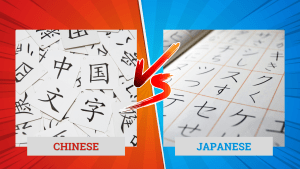A simple “thank you” can go a long way in every culture. It builds trust, shows respect, and strengthens relationships, especially when working with international teams or engaging with global clients. Whether you’re planning an international trip or simply eager to expand your linguistic knowledge, learning how to say “thank you” in different languages is a great place to start. Here’s a handy reference table to guide you.
How to Say “Thank You” in Different Languages
| Languages | How to Say” Thank You” | Pronunciation |
| Arabic | شكراً | shukran |
| Basque | Eskerrik asko | Eh-scare-ee-ask-oh |
| Bengali | ধন্যবাদ | dhonnobad |
| Cantonese | 多謝你 | doh jeh nei |
| Chinese (Mandarin) | 谢谢你 | xiè xiè nǐ |
| Czech | Děkuji | dyeh-kooyee |
| Danish | Tak | tahk |
| Dutch | Dank je | dank yuh |
| Filipino | Salamat | sah-lah-maht |
| Finnish | Kiitos | Key-dose |
| French | Merci | mehr-see |
| German | Danke | dan-kuh |
| Greek | Ευχαριστώ | ef-khah-rees-TOH |
| Gujarati | નમસ્કાર | namaskaar |
| Hawaiian | Mahalo | mah-hah-loh |
| Hebrew | תּוֹדָה | toh-dah |
| Hindi | धन्यवाद | dhanyavaad |
| Hungarian | Köszönöm | kur-sur-nurm |
| Indonesian | Terima kasih | teh-ree-mah kah-see |
| Italian | Grazie | grah-tsee-eh |
| Japanese | ありがとう | Arigato |
| Kannada | ಧೆನ್ಯವಾದ | dhanyavaada |
| Korean | 감사합니다 | Gamsahabnida |
| Lao | ຂອບໃຈ | khobchai |
| Malay | Terima kasih | Tuh-ree-mah kah-sih |
| Persian | متشکرم | moteshakeram |
| Polish | Dziękuję | Jen-koo-yeh |
| Portuguese | Obrigado / Obrigada | oh-bree-gah-doo/dah |
| Russian | спасибо | (Bol’shoye) spasibo |
| Slovak | Ďakujem | Jah-quee-ehm |
| Slovenian | Hvala | hva-lah |
| Spanish | Gracias | grah-see-ahs |
| Swahili | Asante | ah-san-teh |
| Swedish | Tack | tahk |
| Tamil | நன்றி | nandri |
| Telugu | ధన్యవాదం | dhanyavaadam |
| Thai | ขอบคุณค่ะ | khob-khoon |
| Turkish | Teşekkür ederim | Teh-sheh-coor ed-eh-duhm |
| Ukrainian | дякую | (Duzhe) djak-ku-yuh |
| Urdu | شکریہ | Shukria |
| Vietnamese | Cảm ơn | Kam un |
| Welsh | Diolch | Dee-ol-ch |
| Zulu | Ngiyabonga | n-gee-ya-BOHN-gah |
How to Express Appreciation in Different Cultures
Every culture has unique ways of expressing appreciation. While saying “thank you” is universal, how it’s expressed can vary significantly. These differences reflect each society’s values, history, and etiquette.
Expressing Gratitude in East Asia
In Japan, expressing gratitude is often accompanied by bowing. These bows differ in depth according to the degrees of respect and appreciation with which the gratitude is expressed. The simple “arigatō” can be enhanced, particularly in formal contexts, to “arigatō gozaimasu.” Similar practices are found in China. In many East Asian countries, verbal thanks may be accompanied by a slight bow or nod, while in business meetings or context, small gifts are exchanged as tokens of appreciation.
In Korea, “감사합니다” (gamsahamnida) is used in formal contexts, while “고마워” (gomawo) is common among friends and family. A slight bow often accompanies both forms.
Expressing Gratitude in the Middle East
In many Middle Eastern cultures, gratitude is closely tied to religious and cultural customs. While “shukran” is the standard way to say thank you, expressions like “jazak Allah khayran” (may Allah reward you) offer a deeper level of appreciation. Placing a hand on the heart while thanking someone is also a widely recognized gesture of sincerity.
Expressing Gratitude in Europe
In Western Europe, verbal thanks are expected in most interactions, though excessive expressions of gratitude may be considered unnecessary for minor favors. In France, “merci” is commonly used, but more formal occasions may call for “je vous remercie.” In Eastern Europe, expressing thanks often includes small tokens such as chocolates or flowers, especially when visiting someone’s home.
Expressing Gratitude in South Asia
In South Asia, gratitude is often accompanied by a gesture of respect, such as pressing the palms together in a ‘namaste.’ In India, people use “dhanyavaad” or “shukriya,” the latter borrowed from Urdu and commonly used across the Indian subcontinent, including in Pakistan and Afghanistan.
Expressing Gratitude in Africa
Gratitude in African cultures is often a shared, communal experience. In Swahili, “asante sana” (thank you very much) is often expressed with extended handshakes, especially during formal occasions. In West Africa, slight bows or curtsies may accompany verbal thanks as a sign of respect.
Conclusion: Cultural and Linguistic Nuances with the Expert Support
Affective gratitude is just one of the thousands of aspects of successful cross-cultural communication. At EC Innovations, we understand that effective communication in a global context requires more than the translation of some words, as every element has its place in the global context, but cultural intelligence and contextual awareness are key factors.
Our professional linguists and cultural consultants help businesses ebb and flow through the murky waters of international communication, making sure that your messages resonate authentically with your audience, whether you are simply saying thank you in different languages to your business partners, writing marketing texts, or developing multilingual documents. Contact EC Innovations today to learn how our extremely helpful translation services can assist your business in creating meaningful connections across languages and cultures.





